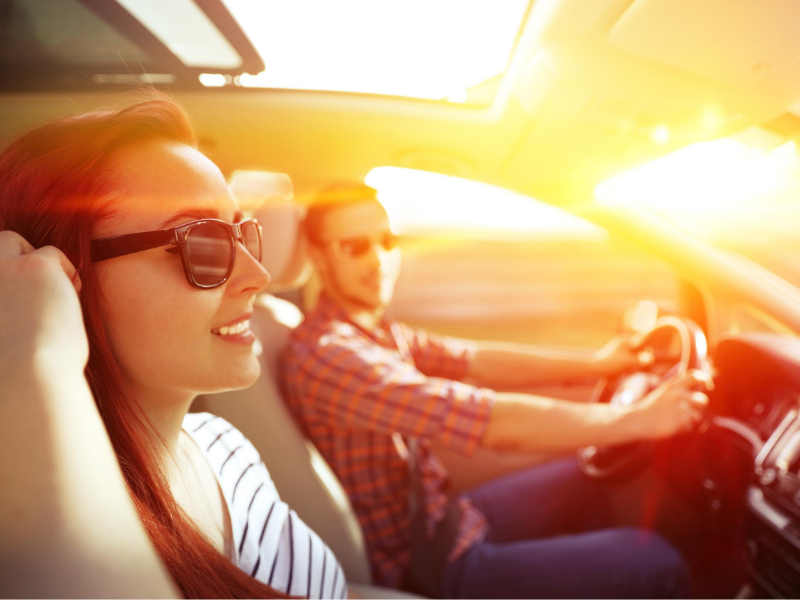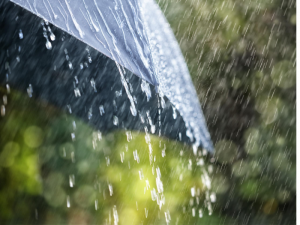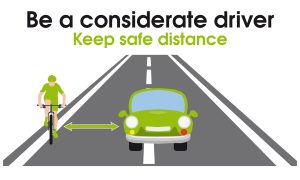30th July 2020
Summer driving guide: top 10 tips to safe summer driving

Over the last few months, for many of us, the majority of our driving has been limited to our essential trips to the supermarket. But with the easing of the coronavirus-induced lockdown, hospitality and holiday sites are beginning to reopen and people are heading out to beauty spots to enjoy the summer.
While it might not bring the harsh weather and tricky driving conditions of a good old British winter, the summer poses challenges of its own to drivers.
In fact, many motorists underestimate the impact that higher temperatures have on our ability to stay focused while on the road.
Whilst in bad weather, most of us tend to slow down and take greater care whilst behind the wheel, when the sun comes out we often become a little complacent and can be encouraged to put our foot down, turn up the music – and quite possibly, tune out from many of the dangers all around us.
To ensure your long-awaited driving freedom is not spoilt by being involved in a road traffic incident, below we list our top ten tips to help keep you safe on the road this summer.
Top 10 summer driving tips:
1. Check your tyres
Just as winter driving can negatively affect your tyres, so can the summer season.
In fact, hot weather causes the air inside your tyres to expand, which could ultimately cause a tyre blowout, increasing the risk of you being involved in a road traffic accident.
That’s why it is always advisable to regularly check your tyres, especially during spells of hot weather.
Make sure you check tyres regularly to maintain both the condition and pressures – and increase pressures to suit extra loads, as advised in your handbook.
And don’t forget to check caravan tyres too, and replace any that show any signs of cracking in the sidewall or tread grooves.
2. Vision/glare
The bright sun streaming in your windscreen can cause serious visibility problems and being dazzled by the sunlight could cause a crash. Make sure you’ve got a pair of good sunglasses with you at all times.
And there are some severe consequences if you’re temporarily blinded and cause an accident.
While there is no specific law about wearing sunglasses when driving, you can be hit with a careless driving charge if you’re involved in an crash because you can’t see the road properly.
Police can hit you with a £100-on-the-spot-fine and three penalty points if they deem you to be driving without due care and attention.

Also make sure your windscreen is clean. Dust and the build-up of splattered bugs is even worse with bright sun shining through so make sure your wiper blades are in top condition and fill up with good quality washer fluid.
3. Keep cool
Start with a cool car – give yourself the best chance of a relaxing drive by parking in the shade or using sunshades on hot days. Allowing a few extra minutes to open doors and windows to circulate warm air, or running your air-con will help cool your car down and avoid immediate discomfort from the heat before setting off.
Top up your fluids – car engines get extremely hot in warm weather, especially in standstill traffic, so ensure your coolant is always topped up.
For cars without stop-start technology, it is a good idea to turn off your engine during traffic. Contrary to popular belief, restarting your engine will not burn more fuel than if you had sat with your engine in ‘idle’ for more than 10 seconds.
Keep hydrated – it’s extremely important to keep hydrated when stuck in a long traffic jam under the searing sun. Take plenty of cold water with you before heading out on longer journeys – enough for you and all of your passengers.
4. Be aware of vulnerable road users
The number of more vulnerable road users increases during the summer season since people usually consider summertime as a reason to take their bikes and motorbikes out to enjoy the warm weather while getting around in town.
In addition to this seasonal increase, the UK Prime Minister has unveiled plans this week for a “cycling and walking revolution” that, if fully realised, could recalibrate the way people move around our towns and cities.
UK authorities aim to boost public health by capitalising on people’s renewed interest in travelling by bike and on foot during the coronavirus pandemic and it is hoped that such a revolution can help tackle some of the biggest health and environmental challenges that the nation currently faces. To support this fitness revolution, earlier this week the UK Government released 50,000 vouchers worth £50 to enable cyclists in England to repair their bikes and get them back on the road.
So as the number of people who share the road increases, things will become even more challenging for everyone.
Read our factsheet for tips on driving safely around cyclists.
 5. Adapt your driving to accommodate tractors when driving on country roads
5. Adapt your driving to accommodate tractors when driving on country roads
It can be annoying if you pull off onto country roads to take a more scenic route in order to enjoy the British countryside, only to get stuck behind a slow moving tractor. But remember, the driver of that slow-moving tractor in front of you may have a soundproofed cab, or could be wearing ear protectors, so may not be able to hear approaching cars.
Also be aware that tractors only have to have brake or indicator lights if driving at night, so they may stop or turn suddenly and without warning in daylight hours.
When you’re driving in the countryside:
- Keep plenty of distance behind a tractor.
- Remember that a tractor may be longer than it appears – there could be a loader on the front.
- Before overtaking, make sure you have plenty of room to get past.
- Slow down if you come across a spillage – if you hit a bale of straw at speed you’ll damage your car.
- Don’t park in a gateway or passing place – they are farmers’ field access points.
Read our factsheet for more tips on driving safely on rural roads.
6. Be prepared for sudden weather changes
In Britain we often pay the price for the little good weather we get and even in the height of summer the weather can turn suddenly so be ready to adapt your driving style in the event of sudden changes in the weather.

And remember, a sudden downpour can lead to large patches of standing water and puddles so stay vigilant.
7. Advice for hayfever sufferers
According to the NHS, around 10 million people suffer from hay fever in England alone.
If you suffer from hay fever and wish to drive, your allergy can cause several problems.
Firstly, some of the symptoms of hay fever, such as sneezing fits, itchy eyes, and runny noses, can make driving more difficult by impairing your vision or distracting you. Sneezing fits can be especially problematic when you are driving at high speeds.
The last place you want to be constantly sneezing is at the wheel of a car going at 70mph, but unfortunately, hay fever tablets are known to have side effects such as blurred vision and drowsiness, which could impair a person’s ability to drive.
Before you turn to taking strong medication before you drive, it is worth remembering that if the police believe you’re under the influence of drugs, you’ll be stopped and could receive a penalty fine.

For drivers suffering from hay fever, an alternative solution could be to use Over the Counter drugs that contain cetirizine or loratadine, as they are less likely to cause drowsiness and impair driving ability.
If in doubt, drivers are advised to speak to their doctor or pharmacist for clarity on the potential side-effects of any medication they are taking.
8. Avoid driving tired
It may have been some months since you last drove on a long trip so if you find yourself feeling tired whilst driving, stop and take a short nap (up to 15 minutes).
It’s best to avoid getting tired in the first place if you can. Try these tips:
- Plan your route to include a 20-minute break in journeys of more than three hours.
- On longer trips, make sure you pull off the road to take a break every couple of hours.
- Take several short (at least 20 minutes) stops rather than one long one.
- Make sure you don’t drink alcohol or eat a heavy meal before driving.
Remember – never stop for a quick nap on the hard shoulder! Also make sure you check the parking restrictions before putting your head down at a motorway service area, as you could get a nasty surprise and wake up to a ticket for overstaying your welcome.
9. Don’t be tempted to use your mobile phone
We all know that using your phone when driving is illegal.
Although our electronic devices may have been our savour during lockdown, enabling us to communicate virtually with our loved ones, remember that losing concentration behind the wheel is way more dangerous than missing out on the latest Instagram stories from your friends.
Here are some tips to avoid using your phone when driving:
- Put your phone on silent and put it away. If you’re using it as a Sat Nav which many of us do – disable notifications from popping up on your screen
- If you’ve no need for your phone for directions, keep it out of sight and out of reach
10. Do not leave pets in parked vehicles
Too many people still think it is acceptable to leave their dog in the car during the summer. The RPCA says that if it’s 22 degrees outside, the inside of a car can reach 47 degrees within one hour, which can lead to dangerous and heart-breaking consequences.
Even parking in shade or leaving the windows down does not make the car a safe place for a dog in summer. So unless you can take your dog with you wherever you go, leave it safely at home.

 5. Adapt your driving to accommodate tractors when driving on country roads
5. Adapt your driving to accommodate tractors when driving on country roads